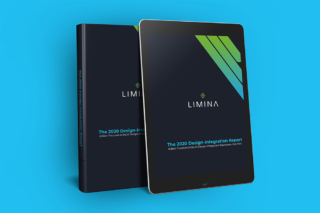By Jon Fukuda and Maria Taylor
The Design-Integration Report
As companies fiercely compete to innovate and enhance the customer experience, design is now more important than ever. A strong user experience based on good design can seem intangible, subjective, and difficult to quantify, but business leaders know it has a strong impact on the bottom line. Many designers and UX professionals are very aware of the business value, but it isn’t always understood or appreciated in the C-suite. Design elements such as color, graphics, and font play an important role in digital product experience, but they are only part of the equation.
Organizations that view design and UX as an afterthought can’t keep pace in the innovative and competitive marketplace. Companies must adopt a human-centered design mindset, culture and operational structure to build products that meet – and exceed – customer expectations. This forms the foundation of a winning strategy in any competitive environment.
While previous studies have addressed the concept of Design-Integration and made the business case for aligning business goals with the goals of the design team, none have established best practices or showed “the how.” We surveyed more than 100 design and UX decision-makers across a variety of sectors, including biotech, software, fintech, and professional services, to find out how they view design and UX, and what role it plays in their company’s success. This quantitative research was supported by ten phone interviews with design and UX leaders from recognized brands, including Google, MicroStrategy, ADP, Geico, Capital One, Atlassian, Slalom Consulting, and The Team W.
Design-Integration Report Table of Contents
- Preface
- Introduction
- The Competitive Advantages of the Design-Integrated Business
- Best Practice #1: Embed a Company-Wide, Human-Centered Design Culture
- Best Practice #2: Communicate for the Common Good of the Business
- Best Practice #3: Integrate Design Resources with Specific Business Functions
- Best Practice #4: Capture and Manage to Specific Business Metrics
- Best Practice #5: Create and Use Artifacts and Repeatable Processes
- Best Practice #6: Invest in Artifacts, then Processes, then Systems
- Barriers to Success Creating Design-Integrated Organizations
- The Road to Becoming a Design-Integrated Business
- The Future of Design and UX
- Research Methodology and Demographics
- Further Reading
- About Limina

Discover how Design-Integration can transform your business.
Download the full Design-Integration Report, for 6 best practices to build businesses that win.
Key Findings
- Design-Integrated businesses place an increasing amount of investment priority on systems design
- Strong and equal alignment of business, design and technology functions leads to a repeatable, standardized and sustainable design process
- 86% of businesses struggle to effectively integrate design